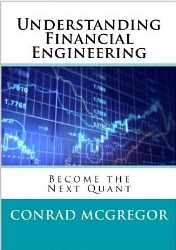Since the general consensus seems to believe strongly in a the prospect of a double-dip recession, the deflationists are currently winning the hearts and minds of investors. Treasury yields are at all time lows, and the 10 year treasury yield to S&P 500 earnings yield is out of whack. I have been focusing on the relative attractiveness of equities over bonds for some time, and the folks over at Shore Capital made Bloomberg’s chart of the day with the same analysis:
At the heart of whether equities look more attractive than bonds is the question of whether inflation or deflation will emerge within the next few years. If we believe in the Japanese outcome, then the wise have prevailed and corporate bonds will save the day. On the other hand, if inflation is sparked by renewed growth and the Fed’s fuel on the sparks, then an investment in 10 year treasuries at 2.6% will be an embarrassing trade. My vote is on the latter.
In Ben Bernanke’s 1999 paper titled “Japanese Monetary Policy: A Case of Self-Induced Paralysis?”, Ben outlines a set of monetary actions for the Japanese. In the introduction, Ben outlines the reasons for the Japanese scenario, all of which sound eerily similar to our own dilemma:
He follows be going into detail regarding Japan’s deflationary environment throughout the 1990’s and how that indicated that the Japanese monetary policy was not accommodative enough. He then admits that under current financial systems, as opposed to when countries were under the gold standard: “inflation or mild deflation is potentially more dangerous in the modern environment than it was… (because) The modern economy makes much heavier use of credit, especially longer-term credit, than the economies of the nineteenth century”.
The rest of the paper discusses Bernanke’s argument for how the Japanese monetary policy can get Japan out of its liquidity trap. In what is probably the most enlightening paragraph within the paper, Ben ruffles his “helicopter” feathers:
The general argument that the monetary authorities can increase aggregate demand and prices, even if the nominal interest rate is zero, is as follows: Money, unlike other forms of government debt, pays zero interest and has infinite maturity. The monetary authorities can issue as much money as they like. Hence, if the price level were truly independent of money issuance, then the monetary authorities could use the money they create to acquire indefinite quantities of goods and assets. This is manifestly impossible in equilibrium. Therefore money issuance must ultimately raise the price level, even if nominal interest rates are bounded at zero. This is an elementary argument, but, as we will see, it is quite corrosive of claims of monetary impotence.
Increase aggregate demand by increasing the money supply and purchasing assets. It is as simple as that. This will also destroy the currency which will fuel the attractiveness of goods in the currency:
Indeed, as I will discuss, I believe that a policy of aggressive depreciation of the yen would by itself probably suffice to get the Japanese economy moving again.
After reading the 10 year old academic paper by Ben, you should realize that he has the resolve and tools to get inflation sparked in the United States. The only wild card is if the Federal Reserve’s power is limited by congress or if Ben Bernanke is removed from office. Both of those outcomes seem unlikely to me. As for whether inflation is good, well that is an argument for another day. The only question I have is why anyone in his/her right mind would want to lock in 10 year treasury yields today at 2.6%?
You can read Ben’s full paper at your leisure: [Download not found]




